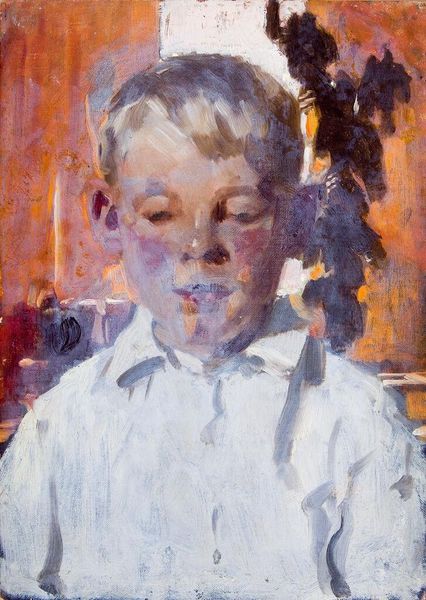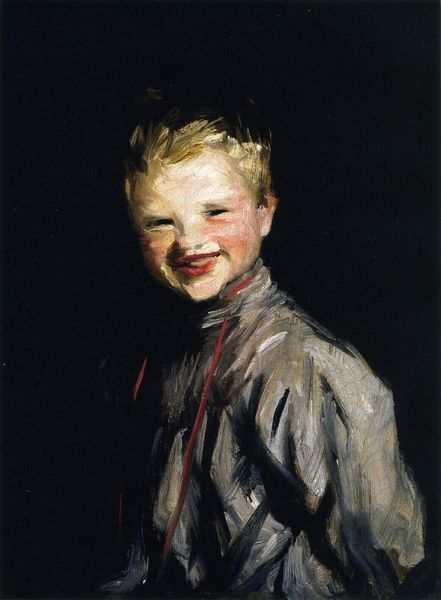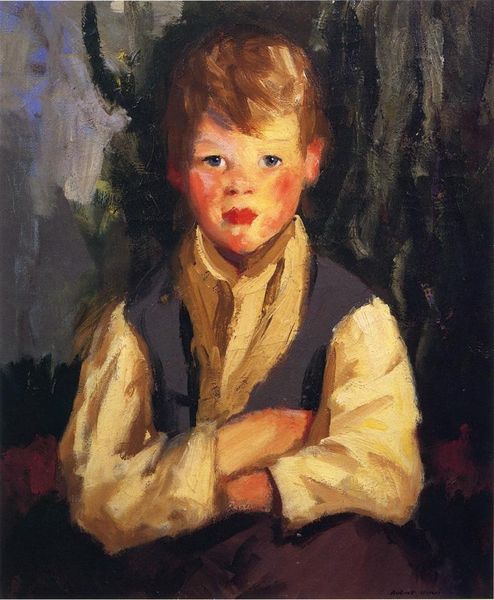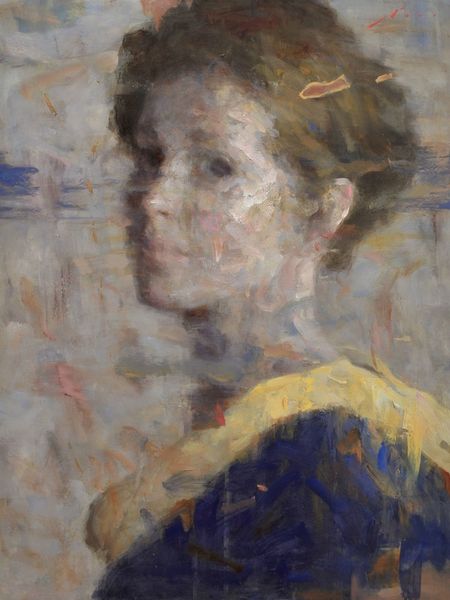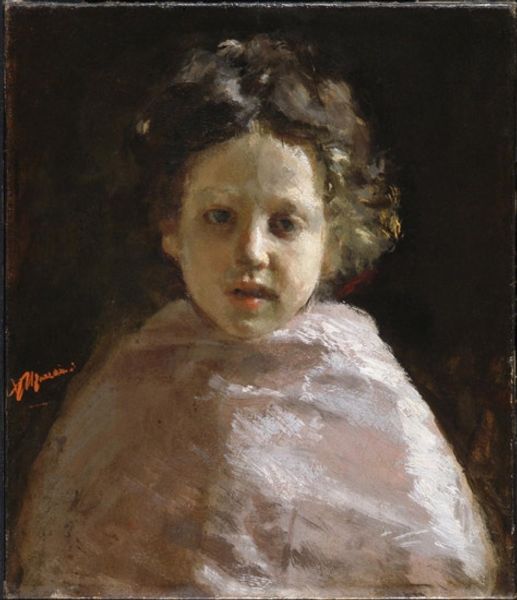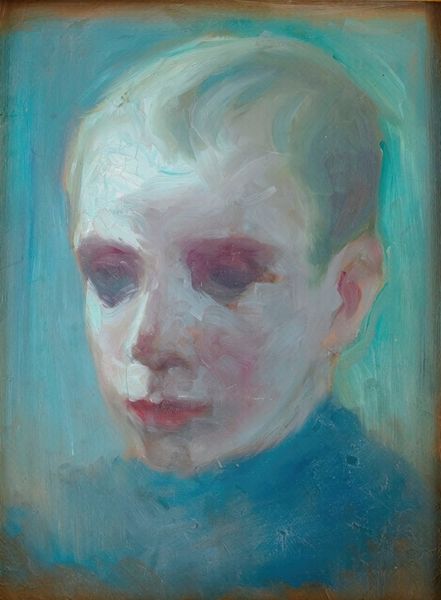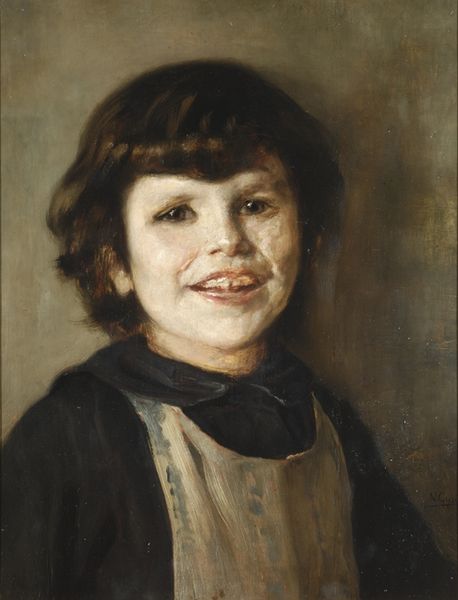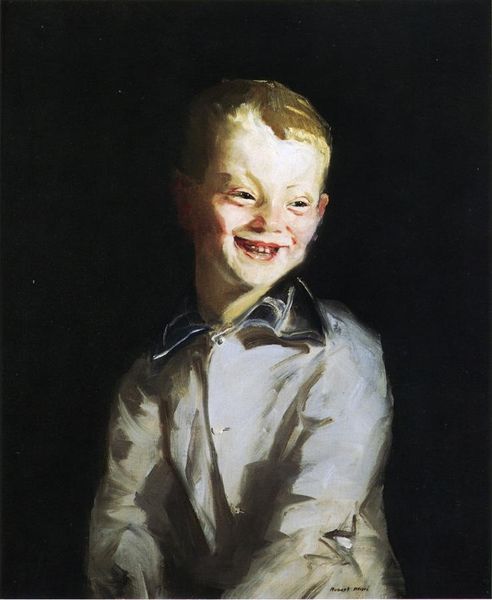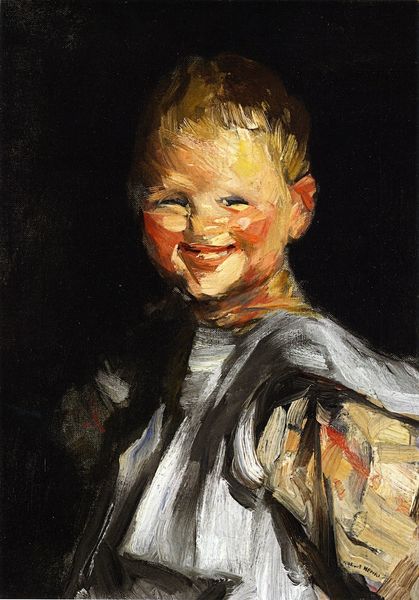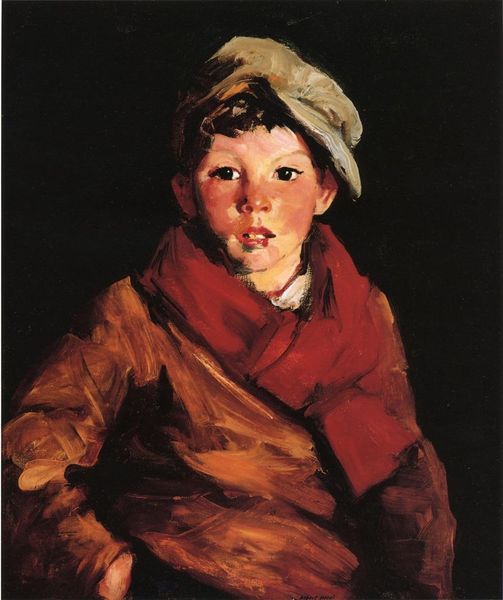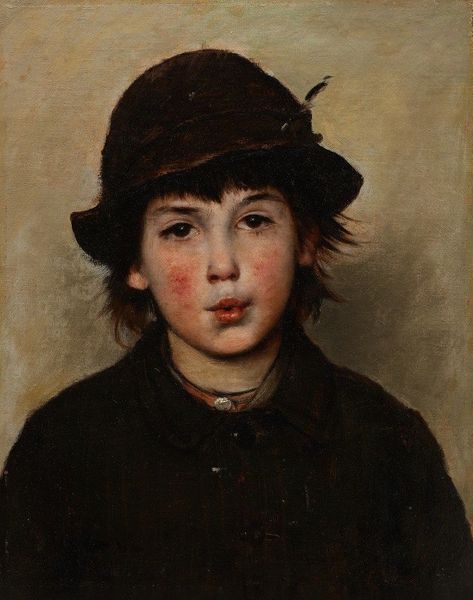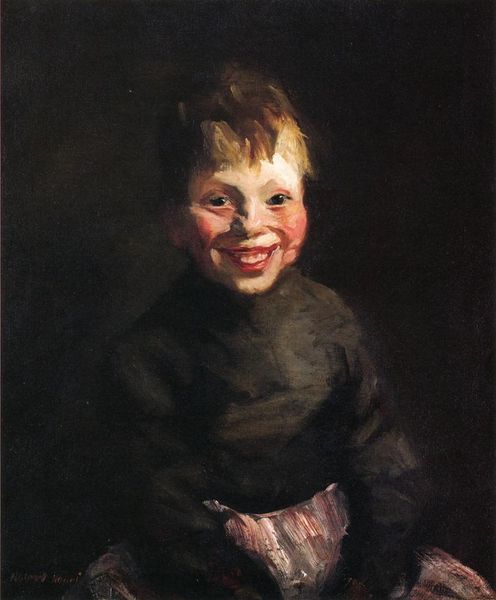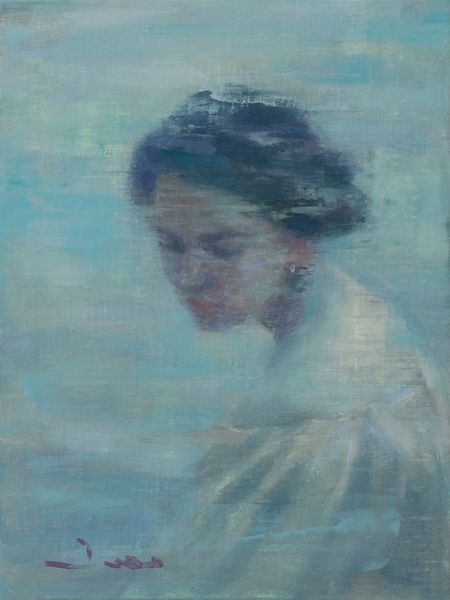
oil-paint
#
portrait
#
impressionism
#
oil-paint
#
oil painting
#
genre-painting
Dimensions: 43.2 x 35.9 cm
Copyright: Public domain
Editor: Here we have Paul Peel's "The Bubble Boy," painted in 1884 using oil on canvas. There’s something so delicate about it, especially with the soft brushstrokes capturing the fleeting nature of the bubbles. What strikes you about it? Curator: It’s interesting how Peel, a Canadian artist trained in Paris, engaged with Impressionism while simultaneously catering to a Victorian sensibility. Notice the intimate portrayal of childhood innocence, a popular subject that gained traction within the rising middle class as social reform took shape in this period. It reminds the viewer of sentimental themes. Editor: That makes sense. I hadn't considered how the societal emphasis on childhood could influence art. Are the bubbles symbolic? Curator: Certainly. Bubbles have long served as a vanitas symbol representing the ephemerality of life, health, and wealth. In a rapidly industrializing world, where social structures were shifting, paintings like this could offer both comfort and a gentle reminder of mortality, shaping ideals and influencing the perception of social roles. Also note how exhibition venues helped Peel build a transatlantic career; the art market of his time was structured for paintings such as "The Bubble Boy" to win prizes and become subjects of academic discourse. Editor: So, beyond being a simple portrait, the painting acts almost as a commentary on the fleeting nature of existence and society's shifting values? Curator: Exactly. And we can view the child’s focused concentration not just as capturing a candid moment, but also suggesting the pressures being placed on childhood itself as a uniquely important stage of development, reflecting both reformative impulses and underlying power dynamics inherent in societal development. Editor: That's fascinating! I’ll never look at bubble paintings the same way again. Thanks for that broader perspective. Curator: It’s rewarding to consider the artwork's historical agency—the role it played in the societal conversations and cultural developments of its time.
Comments
No comments
Be the first to comment and join the conversation on the ultimate creative platform.
